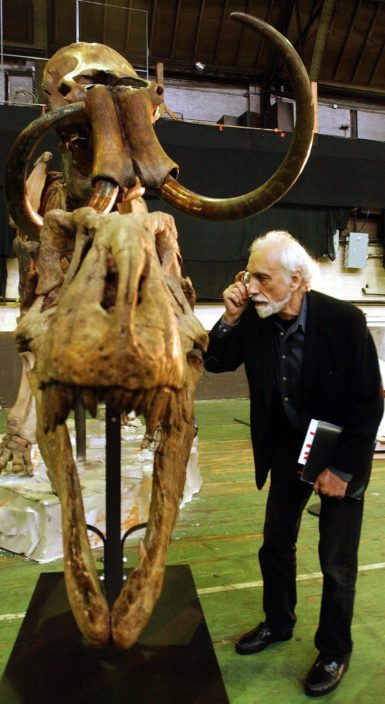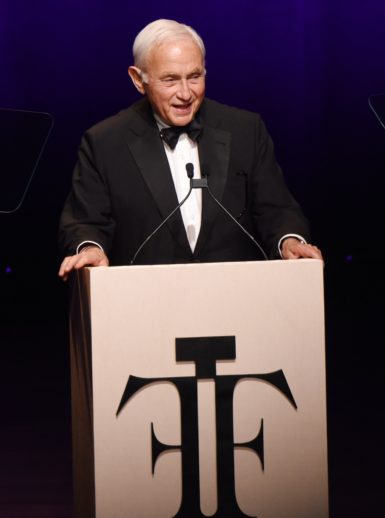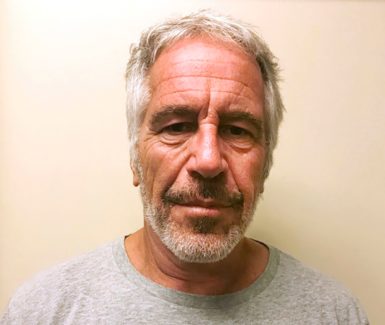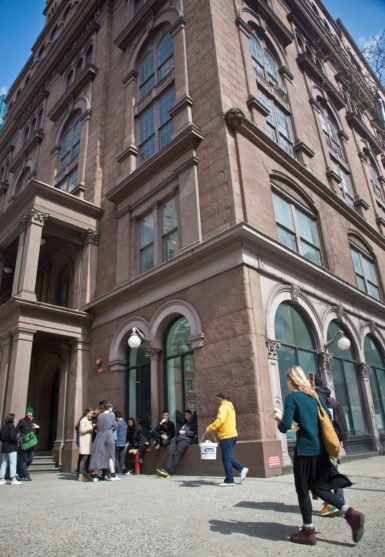ART WORLD NEWS
Jeffrey Epstein’s Art World Connections: A Guide -ARTnews
[ad_1]
Little St. James Island, in the U. S. Virgin Islands, a property owned by Jeffrey Epstein.
GIANFRANCO GAGLIONE/AP/SHUTTERSTOCK
Convicted sex offender Jeffrey Epstein, who died by apparent suicide on August 10 while in jail facing additional charges related to alleged sex trafficking in New York and Florida, cultivated an expansive network of powerful and influential contacts in a wide array of fields—art very much among them. In addition to his dealings in the worlds of finance, science, and technology, the reputed billionaire engaged with art institutions, collectors, and cultural enterprises now reckoning with their affiliations with a figure whose history is being closely examined. Below, a guide to what we’ve come to know so far about Epstein’s ties to the art world.
New York Academy of Art
From 1987 to 1994, Epstein was a board member of the New York Academy of Art, a private university in Lower Manhattan focused on graduate-level education combining, as per the Academy’s website, “intensive technical training in the fine arts with active critical discourse.” In 1995, he met Maria Farmer, a 25-year-old aspiring artist and student at the Academy who, a year later, reported to the New York City Police Department and the FBI that she and her 16-year-old sister, Annie, had been sexually assaulted by Epstein and his close friend and associate Ghislaine Maxwell. (Maxwell has been accused by Maria Farmer and other victims of facilitating and participating in Epstein’s abuse and assault of young women. She has not been charged with a crime and has denied the allegations.)
On Monday, the New York Times reported that Maria Farmer met Epstein at a gallery show tied to her graduation, after which Epstein “called her to offer her a job acquiring art on his behalf, and later managing the entrance to a townhouse he was renovating.” Farmer said that, at the time, she told Eileen Guggenheim, then-dean and current board chair of the Academy whom Farmer says introduced her to Epstein, about his assaultive behavior. (The Times article states that “Ms. Guggenheim said in an interview that the details she was aware of at the time did not rise to a level that would require intervention.”) Painter Eric Fischl, a mentor of sorts for the artist, has said he remembers Farmer calling him about a physical encounter with Epstein: “I just kept telling Maria, ‘You’ve got to get out of there. You’ve got to get out of there,’ ” Fischl told the Times.

Stuart Pivar.
JUSTIN LANE/EPA/SHUTTERSTOCK
Stuart Pivar, co-founder of the New York Academy of Art and a noted collector, gave an interview published over the weekend by Mother Jones in which he said Epstein had been his “best pal for decades” until he learned of the allegations. Noting an exchange with Farmer that served as a turning point in his relationship with Epstein, Pivar said, “She started to tell me about some terrible thing, too terrible to utter, having to do with Jeffrey Epstein. And then a minute later, he shows up. And I began to put two and two together. And I realized that something was going on, which I didn’t know about. And at that point, I knew that he had a different life that I was not aware of.”
The Office of the President at the New York Academy of Art is establishing a committee to “formalize a protocol for how art collectors can and should interact with the Academy’s student artists,” according to the school. In a statement to ARTnews, the institution said, “The New York Academy of Art is deeply shocked and saddened by what one of our graduates, Maria Farmer, went through at the hands of Jeffrey Epstein, and we are truly sorry for what happened to Maria. Jeffrey Epstein was introduced to the Academy via former board member Stuart Pivar, who left the Academy’s board acrimoniously and has had no relationship with the Academy since 1994.”
The New York Academy of Art said it does not have on-site access to financial records before 1999, but from 1999 to 2014 Epstein made a single contribution of $30,000 and purchased tickets to fundraising events.
M.I.T. Media Lab
Epstein donated some $800,000 over the course of 20 years to the M.I.T. Media Lab, a research center for technology, media, science, art, and design at the Massachusetts Institute of Technology. Joichi Ito, director of the Media Lab, has issued an apology for allowing Epstein to donate to the research center as well as accepting Epstein’s investment in his own “outside funds that back start-ups,” according to the New York Times. “In my fund-raising efforts for M.I.T. Media Lab, I invited him to the lab and visited several of his residences,” Ito said in his statement, adding, “I am deeply sorry to the survivors, to the Media Lab and to the M.I.T. community for bringing such a person into our network.”
Last week the university said it will launch an investigation into its relationship with the financier. In an email sent to the M.I.T. community first reported by the New York Times, M.I.T. president L. Rafael Reif wrote, “We recognize with shame and distress that we allowed M.I.T. to contribute to the elevation of his reputation, which in turn served to distract from his horrifying acts.”
Two professors with connections to the Media Lab have so far severed ties with the research center in reaction to news of Epstein’s donations: Ethan Zuckerman, director of the Media Lab’s Center for Civic Media, and J. Nathan Matias, a professor at Cornell University who had an arrangement as a visiting scholar.
Reached by ARTnews, a representative for the M.I.T List Visual Arts Center—a contemporary art museum on campus with exhibition space and site-specific commission programs—said the List Center did not receive any money from Epstein and had no affiliations with him.
Art Dealer Leah Kleman
In a deep dive into Epstein’s social circles, New York magazine named the art dealer Leah Kleman among the figures in an extensive list featured in a “little black book” that he kept of contacts along with records charting relationships of different kinds. As noted by New York, Kleman, who has sold art and antiques from the Manhattan Art and Antiques Center, described negotiating prices with Epstein as “something like a scene out of the movie Mad Max: Beyond Thunderdome.” And last month she told Bloomberg that Epstein, a client of hers for 25 years, wanted deals on work he hoped would make an impression on others: “When he comes in, he is Jeffrey Epstein and he is entitled to a discount. He is big into shock value.”
Collector Leon Black
In July, it was reported that Jeffrey Epstein had remained a named director of the Leon Black Family Foundation—a charitable entity helmed by the chairman of the Museum of Modern Art’s board of trustees and a long-running ARTnews Top 200 Collector—years after his controversial plea deal landed him in prison in 2008. But soon after, the organization said that Epstein had resigned from his post in 2007 at the family’s request and remained listed on paperwork “due to a recording error” that was corrected upon discovery.
At the beginning of August, Black wrote to his employees at the private-equity firm Apollo Management that his company “has never done any business with Mr. Epstein at any point in time,” in an internal memo reported on by the New York Times. At the time, Black did not offer comment on an investment by Epstein’s financial advisory firm in Environmental Solutions Worldwide, a company for which two of Black’s sons serve as board members. (A request for comment from Black sent by ARTnews to Apollo Management was not returned.)

Leslie Wexner.
STEPHEN LOVEKIN/WWD/SHUTTERSTOCK
Leslie Wexner
Leslie Wexner, a retail mogul whose cultural contributions include funding the Wexner Center for the Arts at Ohio State University, had a close relationship with and received financial advice from Epstein dating back to 1989. In early August, reports followed Wexner’s assertion in a memo sent to the Wexner Foundation that Epstein had “misappropriated vast sums of money” from him and his family during that time, and that the discovery was made as Wexner separated from Epstein in 2007. “This was, frankly, a tremendous shock, even though it clearly pales in comparison to the unthinkable allegations against him now,” Wexner’s memo read. It continued: “I am embarrassed that, like so many others, I was deceived by Mr. Epstein. I know now that my trust in him was grossly misplaced, and I deeply regret having ever crossed his path.”
Wexner was also the previous owner of the notorious seven-story townhouse on New York’s Upper East where Epstein lived, following a transfer of the property, reportedly with no money involved, to a trust under his control.
A Collection of His Own…
Artworks in Epstein’s possession have come to light, including details about Parsing Bill, a painting of Bill Clinton in a blue dress and red high-heels by Petrina Ryan-Kleid, who attended the New York Academy of Art. That work and another by Ryan-Kleid—War Games, which shows former president George Bush playing with paper airplanes and blocks—were exhibited at the Academy’s 2012 Tribeca Ball. But the artist told Artnet News that she “had completely lost track of [Parsing Bill] when it was sold seven years ago. So it was a complete surprise to me to learn … that it wound up in Epstein’s home.”

Jeffrey Epstein.
AP/SHUTTERSTOCK
At a 10,000-acre New Mexico ranch where, according to the New York Times, Epstein had “hoped to seed the human race with his DNA by impregnating women,” a work depicting a girl lying atop a lion was on view.
And Vice rounded up other oddities in Epstein’s collection, including a nude portrait of a woman in his bathroom, a stuffed poodle, and a life-sized female doll hanging from a chandelier at his mansion on the Upper East Side. The New York Times previously reported that that same mansion was home to a mural on its second floor depicting “a photorealistic prison scene that included barbed wire, corrections officers and a guard station, with Mr. Epstein portrayed in the middle,” as well as a chess board with custom pieces modeled after his female staff members.
In his interview with Mother Jones, Stuart Pivar offered the following explanation for what might tie together Epstein’s taste in art: “Jeffrey was amused to have in his house fake art which looked like real art. … He was amused to put one over on the world by having fake art. He thought that he was seeing through the fallacy.”
[ad_2]
Source link












